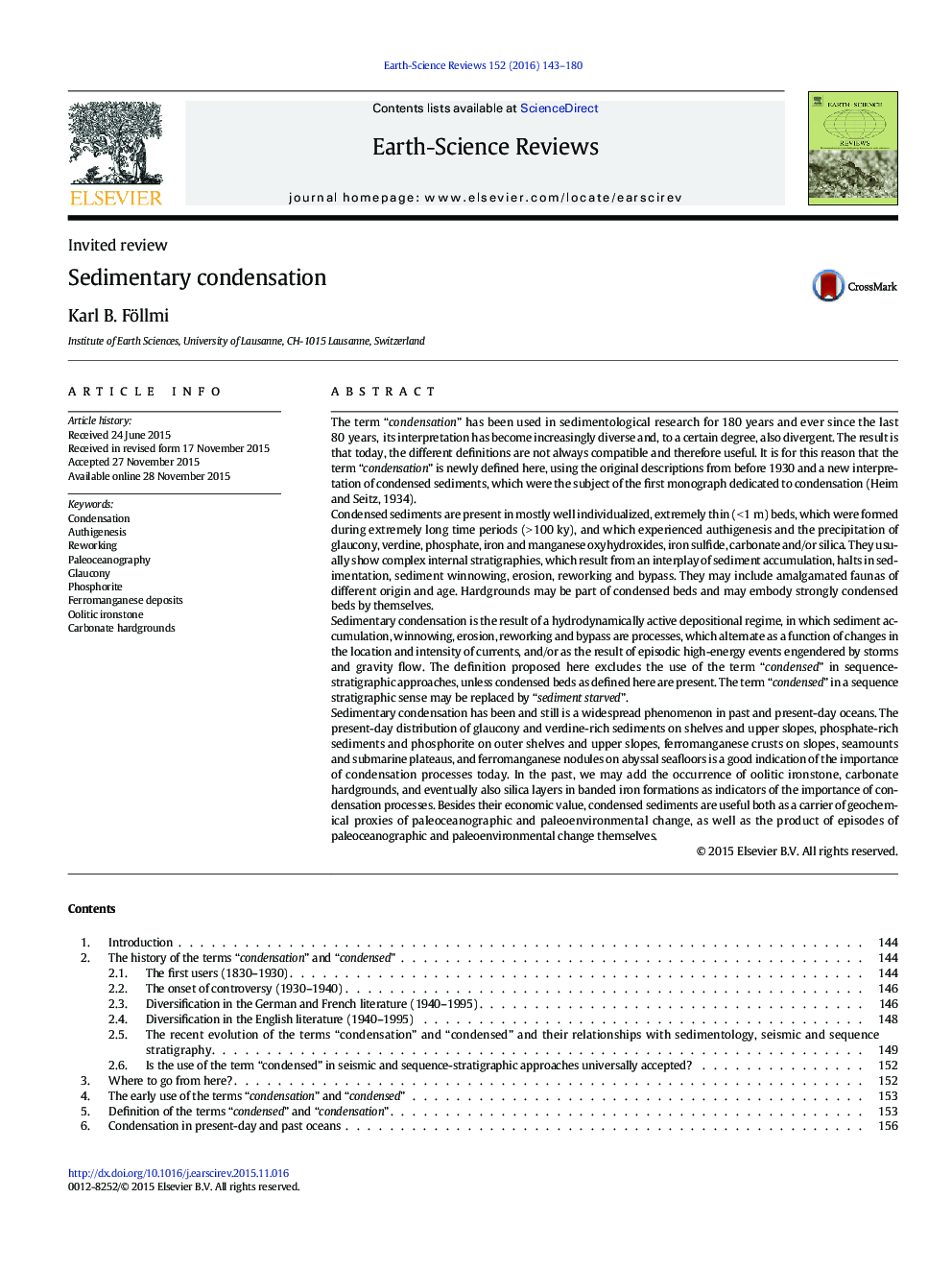| کد مقاله | کد نشریه | سال انتشار | مقاله انگلیسی | نسخه تمام متن |
|---|---|---|---|---|
| 4725635 | 1639950 | 2016 | 38 صفحه PDF | دانلود رایگان |
The term “condensation” has been used in sedimentological research for 180 years and ever since the last 80 years, its interpretation has become increasingly diverse and, to a certain degree, also divergent. The result is that today, the different definitions are not always compatible and therefore useful. It is for this reason that the term “condensation” is newly defined here, using the original descriptions from before 1930 and a new interpretation of condensed sediments, which were the subject of the first monograph dedicated to condensation (Heim and Seitz, 1934).Condensed sediments are present in mostly well individualized, extremely thin (< 1 m) beds, which were formed during extremely long time periods (> 100 ky), and which experienced authigenesis and the precipitation of glaucony, verdine, phosphate, iron and manganese oxyhydroxides, iron sulfide, carbonate and/or silica. They usually show complex internal stratigraphies, which result from an interplay of sediment accumulation, halts in sedimentation, sediment winnowing, erosion, reworking and bypass. They may include amalgamated faunas of different origin and age. Hardgrounds may be part of condensed beds and may embody strongly condensed beds by themselves.Sedimentary condensation is the result of a hydrodynamically active depositional regime, in which sediment accumulation, winnowing, erosion, reworking and bypass are processes, which alternate as a function of changes in the location and intensity of currents, and/or as the result of episodic high-energy events engendered by storms and gravity flow. The definition proposed here excludes the use of the term “condensed” in sequence-stratigraphic approaches, unless condensed beds as defined here are present. The term “condensed” in a sequence stratigraphic sense may be replaced by “sediment starved”.Sedimentary condensation has been and still is a widespread phenomenon in past and present-day oceans. The present-day distribution of glaucony and verdine-rich sediments on shelves and upper slopes, phosphate-rich sediments and phosphorite on outer shelves and upper slopes, ferromanganese crusts on slopes, seamounts and submarine plateaus, and ferromanganese nodules on abyssal seafloors is a good indication of the importance of condensation processes today. In the past, we may add the occurrence of oolitic ironstone, carbonate hardgrounds, and eventually also silica layers in banded iron formations as indicators of the importance of condensation processes. Besides their economic value, condensed sediments are useful both as a carrier of geochemical proxies of paleoceanographic and paleoenvironmental change, as well as the product of episodes of paleoceanographic and paleoenvironmental change themselves.
Journal: Earth-Science Reviews - Volume 152, January 2016, Pages 143–180
